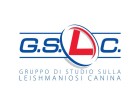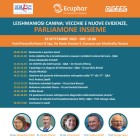On March 6th has been held in Milano a meeting of the study subgroup “Therapeutic approach of dogs with leishmaniasis” coordinated by Prof. Gaetano Oliva, with the cooperation of Dr. Xavier Roura, Dr. Alberto Crotti, and Dr. Eric Zini. At this meeting participated Prof. George Lubas and Dr. Andrea Zatelli as well, with the presence of Dr. Paola Badiale representing Hill’s Pet Nutrition. In this occasion, the preliminary version of the master dealing with “Canine leishmaniasis: Guidelines for Diagnosis, Staging, Therapy, Monitoring and Prevention. Part II: therapeutic approach” has been discussed.
The paper has been prepared considering only drugs for which international references are reported regarding their activities or efficacy trials against canine leishmaniasis. Therefore, antimonial compounds and allopurinol and the combination of both drugs have been considered. Amphotericin B, aminodisine, pentamidine, spiramicyn-metronidazole association, fluoroquinolons and miltefosine have been taken also in consideration. For the therapeutic approach a clinical classification (staging) has been outlined and which animals should be treated with reference or alternative protocols have been suggested. Finally, monitoring and the possible further treatment in patients already subjected to therapy have been discussed.
On May 29th in Rimini the CLWG (Canine Leishamniasis working group) had a meeting coordinated by Dr. Andrea Zatelli in order to arrange the final version of the guidelines in the therapeutic approach in canine leishmaniasis. The proof version was prepared by Prof. Oliva and the following members actively participated to the final arrangement, including Prof. Castagnaro, Lubas, and Paltrinieri as well as Dr. Crotti, Gradoni, Maroli, Roura, Zini and Badiale (the latter as Hill’s Pet Nutrition representative).
On May 30th, during the 59° International Multi-session Congress of SCIVAC held at the Palacongressi della Riviera in Rimini from May 30th to June 1st 2008, the ![]() “Canine Leishmaniasis: Guidelines in diagnosis, staging, therapy, monitoring and prevention. Part II: Therapeutic approach and monitoring”.
“Canine Leishmaniasis: Guidelines in diagnosis, staging, therapy, monitoring and prevention. Part II: Therapeutic approach and monitoring”.
has been officially presented.
This consensus document finalized the goal of therapy of leishmaniasis as: i - reduction (elimination) of the parasitological burden, ii- management of injuries induced by the parasite, iii- to restore the immunity response, iv- consolidation of the results obtained during the time, and v- treatment of the possible relapse. As it is known, the anti-leishmaniasis drugs have been developed initially in human medicine, and then utilized in veterinary science as well. These drugs show a great variability in in vitro and in vivo activities.
The CLWG proposes with these guidelines a clinico-therapeutical scheme applicable to the most cases that are seen daily by practitioners. This scheme could not be exhaustive or unadjustable. These guidelines are not able definitively to solve all the problems related to the canine leishmaniasis therapeutic approach and leave out the support therapy.
The criterion in the selection of drugs to employ in canine leishmaniasis has been based on the consultation of the main search for biological referenced papers such as PubMed (www.ncbi.nlm.nih.gov/pubmed/) by means of a list of key words (dog* OR canine) AND (drug OR treat* OR therap* OR efficac* OR effect* OR action* OR activit* OR against OR versus) AND (leishm* OR antileishm*) NOT vaccin*). This search produced 90 papers reduced to 60 as some of them were not related to the goal of this study. In the analysis of these papers a list of limitation emerged: clinical trials not blind; lack of control group/s; amount of dogs used not always statistical significant; heterogeneous group of dogs; diagnostic and clinical criteria variable; recovery criteria variable; follow-up time variable; and dosages and time of drug administration variable even for the same drug.
In addition, in many cases the primary goal of such papers, was not the therapeutic efficacy evaluation of the drug: Indeed, frequently papers had diagnostic, parasitological, pharmacological, immunological, and organ injury pathogenesis goals. The drugs considered were: antimonial compounds and allopurinol (five references), amphotericin B (classical or liposomial) and aminodisine (3-4 references each), pentamidine, spiramicyn-metronidazole association, enrofloxacin and marbofloxacin, domperidone (one reference each) and miltefosine (registered drug in Italy, without any reference for the dog). The primary therapeutic protocol resulted of N-methyl glucamine antimoniate (100 mg/kg q24h SQ for 4 weeks) with the addition of Allopurinol (10 mg/kg bid PO for at least 6 months).
The CLWG reached the consensus which subjects should be treated defining a patient staging according to the following table:
| Stage | Patient definition | Description |
| A | Exposed | Dog without any evidence of clinico-pathological alteration, in which the parasitological diagnostic assays are negative but are evidenced specific antibody titres not higher than fourfold of threshold value of the reference laboratory. The exposed dogs live or having lived in an area where presence of phlebotomus vector of parasite has been established |
| B | Infected | Dog without any evidence of clinico-pathological alteration, in which is possible to observe the parasite both with direct testing (microscopy, culture, or PCR) or indirect assays (evidence of specific antibody). |
| C | Sick | Infected dog in which could be observed any kind of clinico-pathological alteration associated to leishmaniasis and antibody titres higher than fourfold of threshold value of the reference laboratory |
| D | Sick with severe clinical signs | Sick dog affected by: (i) proteinuric nephropathy; (ii) chronic renal failure; (iii) severe ocular diseases that could induce functional loss end/or require immune-suppressive therapy; (iv) severe joint diseases that could induce reduction of motility function and/or require immune-suppressive therapy; (v) severe concomitant diseases such as infectious, parasitological, neoplastic, endocrine or metabolic in origin. |
| E | Refractory Recurrent | (Ea) Sick dog refractory to the treatment (Eb) Sick dog undergone to the treatment with an early relapse |
The CLWG with the primary therapeutic protocol above described, based on the consulted literature, established that dogs in stage B (infected) and C (sick) the clinical recovery is almost constantly reached. In addition: the good health status is maintained for period almost over one year; the side effects are of scarce importance (generally limited to the histological injury by the antimoniate); the abrupt decrease of parasitological burden (in few months); and the reduced infectivity ratio of phlebotomus. On the other hand, dogs in D stage (severe sick dog) fair to good improvements are observed. The prognosis of these dogs is highly related to the initial clinical conditions (i.e. CRF) and the support therapy is essential (i.e. KCS).
The CLWG, if dogs are not responding to the primary therapeutic protocol, suggests to re-evaluate the clinical case and to consider concomitant diseases. The rationale for the use of alternative therapy other than the association of antimoniate and allopurinol is based on the presence of patients that: do not respond to the therapy, occurrence of early relapse, low compliance of the owner, and intolerance and/or side effects to the primary therapeutic protocol.
The alternative protocol are based on a single agent such as allopurinol (which has more mild or slow effects in comparison to the association with antimoniate), the use of amphotericin B or aminodisine (nephrotoxicity should be evaluated), the use of the spiramicyn-metronidazole association and finally of Domperidone. The CLWG is neutral on the employment of miltefosine in association with allopurinol or alone as the above protocols do not have for their support any referenced paper to now.
Monitoring and the treatment restore in dogs in B (infected) or C (sick) stages are based on physical exam and laboratory results data. In addition, these procedures are related to the particular support therapy that the patients need. Therefore, the CLWG suggests at the end of the antimonial treatment the periodic monitoring every 6 months of the antibody titer (including the cytology) and the quantitative PCR in the lymphonode or bone marrow collections (this assay is not yet enough standardized). If, on the other hand, the subjects are not normal or do not normalize from the clinical and/or laboratory point of view, it is necessary to classify the patient in the refractory group or in the relapsing group. These animals should be treated as mentioned before with the introduction of alternative protocols.
From this site is possible to download the translation in English of the paper appeared in Veterinaria, 21, 3 June 2007, pag. 19-32 ![]() “Canine leishmaniasis: guidelines for diagnosis, staging, therapy, monitoring and prevention. Part I: diagnostic approach and classification of the patient affected by leishmaniasis and management of dogs with proteinuria”.
“Canine leishmaniasis: guidelines for diagnosis, staging, therapy, monitoring and prevention. Part I: diagnostic approach and classification of the patient affected by leishmaniasis and management of dogs with proteinuria”.
In the CLWG meeting of Perugia held October 23rd 2008, during the 60° SCIVAC National Congress have been reported and discussed the activities updated after the last congress of Rimini. In particular the activities consisted of:Presentation of a poster about the activity of CLWG at the combined congress “13th Intl Soc. Animal Clinical Pathology”, “10th Eur. Soc. Veterinary Clinical Pathology”, “8th Ass. Eur. Comparative Clinical Pathology” e “7th Acute Phase Protein” entitled: ![]() “Diagnosis of canine leishmaniasis: reccomendation from the canine leishmaniasis working group” , held in Barcelona, Spain from Sept 30th to Oct 3rd, 2008; report of June 5th 2008 in the web publication Vet Journal of the article
“Diagnosis of canine leishmaniasis: reccomendation from the canine leishmaniasis working group” , held in Barcelona, Spain from Sept 30th to Oct 3rd, 2008; report of June 5th 2008 in the web publication Vet Journal of the article ![]() ”Therapy of canine leishmaniasis: guide lines of CLWG”; report of November 11th 2008 in the web publication Vet Journal of the article
”Therapy of canine leishmaniasis: guide lines of CLWG”; report of November 11th 2008 in the web publication Vet Journal of the article ![]() “Canine leishmaniasis management: decisions and errors”.
“Canine leishmaniasis management: decisions and errors”.
The plans of CLWG to perform by the end of the current year include the publication on the Veterinaria journal the article entitled “Canine leishmaniasis: guidelines for diagnosis, staging, therapy, monitoring and prevention. Part II: therapeutic approach” outlining extensively the presentation performed at the 59° SCIVAC congress in Rimini, including the reviewing of the therapy updated to October 31st, 2008. ![]() A preview of this article is here available .
A preview of this article is here available .
The plans for the next year 2009 include the publication of the guidelines in diagnosis and clinical classification of canine leishmaniasis in a prestigious English written journal (J Am Vet Med Assoc) in order to rise up the attention of the international scientific community toward the activities of CLWG. Finally, the CLWG established to give an award to a young European researcher, below 35 years old, that has published a scientific paper in canine leishmaniasis in an indexed journal. The details of this award will be spread out using the most popular information channels including these web pages.


